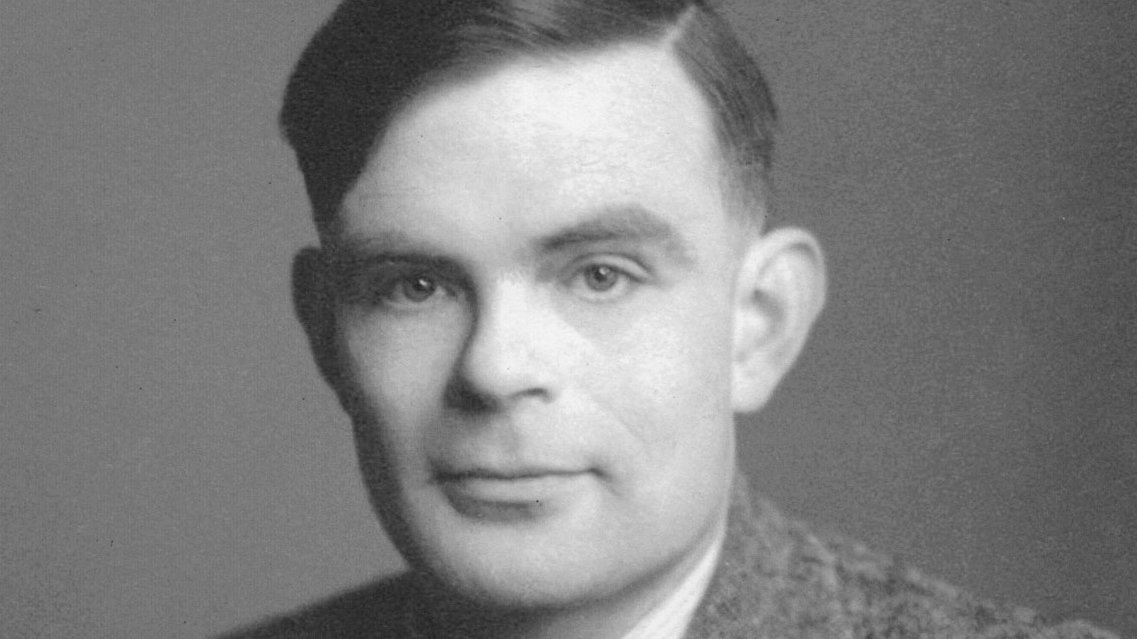
by Admin | Jun 23, 2020 | News
As today is the birthday of Alan Turing, AIWS House introduces some writings about him. The article can be found
here.
The Rich Legacy of Alan Turing by Liat Clark and Ian Steadman, Wired UK
Alan Turing achieved more in the space of a few decades than anyone could hope to achieve in a lifetime. His ability to imagine the unimaginable and put these lofty theories down on paper, and then into practice, show a highly disciplined character capable of becoming an expert in pretty much anything he had an interest in. Turing went from drawing up a basic model for all computers to breaking down the constructs of complex chemical reactions with enviable ease.
Turing’s achievements may not all be war-winning discoveries like the Enigma-cracking Bombe, but each theory or invention paved the way for generations of researchers to develop, adapt and improve upon his ideas. Here, Wired.co.uk breaks down some of the most significant contributions Turing made to modern science.
The Bombe
In 1940 and 1941, German U-boats were decimating Allied supply ships. Thousands of merchant navy vessels were lost during World War Two, and Winston Churchill was to later pen the words: “The only thing that ever really frightened me during the war was the U-boat peril.”
By 1943 the tide had turned – Alan Turing had developed the Naval Bombe, an adaptation of his decryption Bombe device capable of laying bare the secrets of the complex German Naval Enigma. Churchill would later comment that Turing had made the single biggest contribution to Allied victory in the war.
The complexity of the German Enigma – an electromagnetic machine that replaced plain text letters with random letters chosen according to the settings of a series of rotors – lay in the fact that its inner elements could be set in billions of different combinations, meaning it would be virtually impossible to decode text without knowing the original settings. As the war progressed, the German military added more rotors to the machine, making it even more complex.
The Polish Cipher Bureau managed to get hold of an Enigma machine and develop an early prototype of the Bombe. They passed their knowledge on to British intelligence. Turing and his colleague Gordon Welchman built on the Polish machine at Bletchley Park. The machine replicated the rotors of the Enigma and would search through different combinations of rotor positions in order to test potential ciphers.
Turing cracked the system by focusing on the idea of the “crib”. The encrypted German messages often contained predictable words, including the full names and titles of military officers, at the same point in each message. The Enigma would never encipher a letter to itself, therefore Turing could use these terms, or “crib” as a starting point, looking out for where the same letter in a possible crib appeared in the same place in its ciphertext counterpart – much like a codeword puzzle. The machine would automatically search through the possible positions of the Enigma’s wheels, eliminating those combinations ruled out by the crib. Once the mathematical cycle of the rotors relating to the crib was found, it could be used to decipher the rest of the text.
Turing’s design relied heavily on cribs, and it was the follow-up machines developed by peer Gordon Welchman and others that would speed up the process as the war progressed.
__ACE Computer
__ At the tail-end of World War Two, Turing headed to the country and MI6 research centre Hanslope Park, not far from Bletchley Park. Here, he said, he was “building a brain”; a system so advanced it could calculate entire mathematical scenarios for researchers, rather than aid with the odd equation.
His accurate assumption would lead to a paper on the ACE (Automatic Computing Engine) being put to the National Physical Laboratory (NPL) Executive Committee in 1945, which was cast aside for being too complex and having an estimated cost of ₤11,200.
The team at the NPL instead set about building a smaller version of the complex series of circuits Turing presented, which was put into action only on 10 May, 1950. By this time, Turing had left the NPL and was already working on another computer at Manchester University, Manchester Mark 1. The Pilot Model ACE would be the first electronic computer and one of a handful of stored-program computers to be built in Britain.
It was the fastest computer in the world at the time, despite clocking in at what would today be considered a 1 MHz snail’s-pace. Its memory functioned off mercury delay lines, with each one capable of storing data of up to 32 bits. Thirty Pilot Models were sold, but by 1958 the full-sized model had been built. The basic design of Turing’s ACE would be put to use in the MOSAIC (Ministry of Supply Automatic Integrator and Computer), used to calculate aircraft movements during the Cold War. It was also the basis of the Bendix G-15, considered the first personal computer, which was for sale up until 1970.
Turing machine
Despite perhaps being most well-known today for his contributions to codebreaking, no less important are Turing’s insights into the concept of the Turing machine and universal computability. Without going into too much detail, Turing proposed (in collaboration with his doctoral supervisor Alonzo Church) a hypothetical machine (in 1936) that could be used to simulate any algorithmic computation. More of a thought experiment than something that could be constructed in real life, the Turing machine would be fed by a long piece of tape on which would be written single-character instructions. The machine could read each instruction one at a time, process it according to some predetermined coded algorithm, and then move the tape back or forwards as necessary.
This was groundbreaking in the sense that it was the first proposal for a machine with multiple functions determined by a program held within a memory store, rather than by physically altering the machine’s wiring or structure. Turing machines are still used today in computer science as a research and teaching tool, as it’s a simple way to model what happens in a CPU. Turing and Church together hypothesised the idea of a universal Turing machine, a machine which could read and perform any algorithmic function – that is, a Turing machine that can simulate the algorithmic functions of any other Turing machine. “Turing completeness” is now one of the defining features of modern computers; the only practical limit on a machine’s Turing-completeness is the amount of memory it has.
The first fully digital electronic Turing-complete computer was the US ENIAC in 1946 – however (and rather amazingly) Charles Babbage’s Analytical Engine, first described in 1837 but never built, would theoretically have been Turing-complete.
Turing-completeness has several wide-ranging philosophical ramifications, too – much of the philosophy of the mind over the past few decades has been influences by Turing’s ideas.
Speech encryption
Turing’s cracking of the Enigma code wasn’t his only technological breakthrough at Bletchley Park. He also developed a method of securely encoding and decoding telephone conversations in 1944, building on work he had seen at Bell Labs in the US in 1942. Named “Delilah”, it was never used by the government, but Turing fed some of his work back to Bell Labs as they developed SIGSALY – a device which was the first to use many digitally secure speech concepts, and which was used for the most secretive Allied communications.
__Morphogenesis
__ Though he was only just beginning to publish on the subject by the time of his death in 1954 (and it was not until the 1990s that much of his work was finally published), Turing’s contributions to morphogenesis are still relevant to the field today. Morphogenesis is the process by which multi-celled life develops its shape as it grows, and Turing’s 1951 paper The Chemical Basis of Morphogenesis explored how non-uniform biological characteristics (like stripes on a zebra) could arise out of a uniform starting state in the womb. Turing was fascinated his entire life by the structure of plant petals and seeds (phyllotaxis), and how they seemed to adhere to the Fibonacci sequence – especially when it came to sunflowers. You can help complete his unfinished research on this with the Turing’s Sunflowers project, which aims to crowdsource growing thousands of sunflowers around the country in 2012 so we can prove Turing’s thesis once and for all.
Chemistry and physics
Turing’s work on morphogenesis also has applications in chemistry and physics. He was among the first to notice that chemical systems that are otherwise stable become unsettled by diffusion under certain circumstances – in these “reaction-diffusion” systems, diffusion clashes with individual chemical reactions leading to the apparent paradox of the overall system getting more complicated over time. The same process that might lead to spots and patterns on animals also works on the molecular level, and some consider Turing’s work on reaction-diffusion systems to be one of the earliest forays into the field of chaos theory.
Chess computer program
In 1950, Turing wrote the first ever chess computer program as part of his work on artificial intelligence. Calling it “Turbochamp”, he tried to implement it on Manchester University’s Ferranti Mark I without success. Instead, in the summer of 1952, he “played” as the program against his friend and colleague Alick Glennie. Turing would work through each move according to his program on paper, taking around half an hour each time. While it showed that Turbochamp was capable of playing a human at chess, it lost against Glennie in 29 moves. You can watch the game here. It was 1957 before a fully-operational chess program was up and running, created by Alex Bernstein at IBM on an IBM 704.
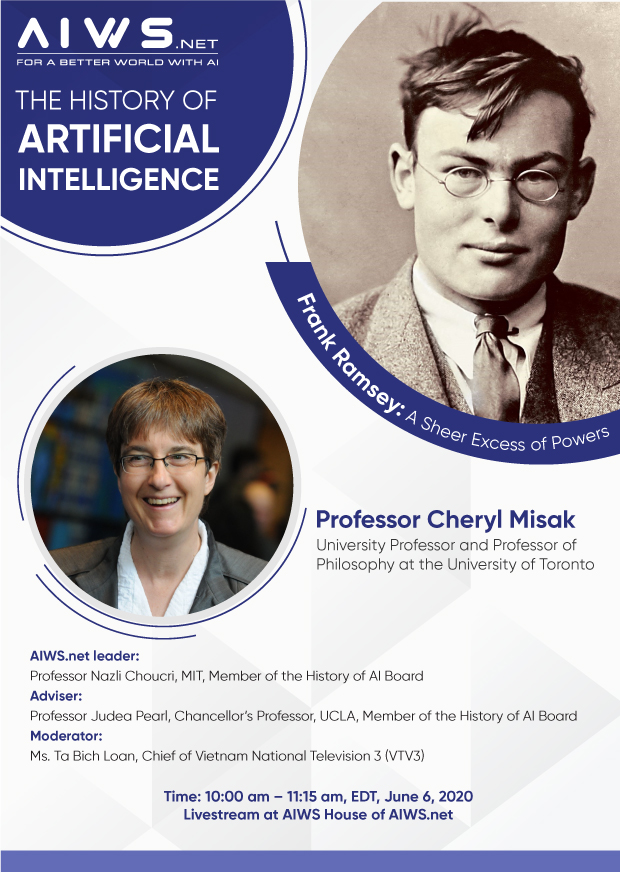
by Admin | Jun 15, 2020 | News
Professor Judea Pearl wrote: “Ramsey was definitely one of the clearest forerunners of subjective probabilities and the revival of Bayes statistics in the 20th century, which influenced the 1970-90 debate on how to represent uncertainty in AI systems.”
Professor Cheryl Misak, author of the book “Frank Ramsey: A Sheer Excess of Powers”, presented at AIWS House, the History of AI:
“1926, a few years before de Finetti, Ramsey figured out how to measure partial belief; put forward a theory of probability as subjective degree of belief; and showed that rationality could be understood as expected utility. These results play a prominent role in contemporary economics and Bayesian statistics, as well as much of psychology, artificial intelligence, etc.”
Frank Ramsey was recognized as a historical figure in AI under the category: Meaningful and Influential Pioneer.
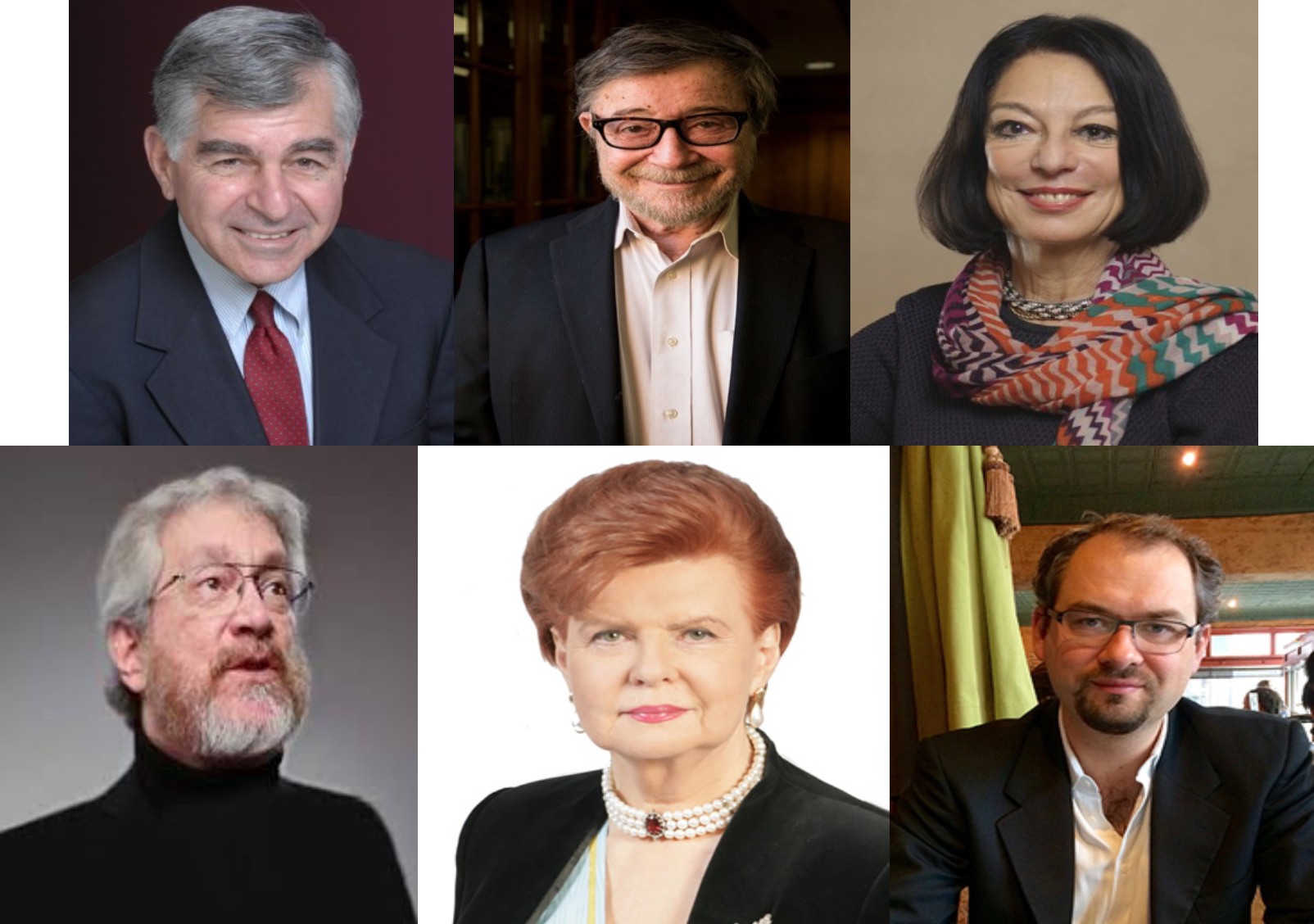
by Admin | Jun 4, 2020 | Chronicles
I. Scope: includes 3 fields
- Ideas, Theories, Concepts, and Methodologies for AI through applying AI.
- Inventions and Innovations in AI science and technology.
- AI applications, iniatives in politics, governments, society, economy, business, industry.
Types of contents: documents, pictures, video, voice, evidences, products, software, apps, stories etc.
II. Criteria to identify events, figures, achieveents as historical significances in the AI Chronicle: they are either 1. Meaningful, influential pioneer (satisfy both 3 requirements: Pioneering, Meaningful, and Influential), or 2. Changing the world.
Here are the details:
1. Meaningful and influential pioneer: they have to satisfy all 3 requirements below
a. Pioneering
Pioneering of meaningful and helpful ideas, theories, methodologies, principles, concepts, initiatives, or applications.
These should be officially announced by press releases of credible organizations, newspapers, or media first, before any other launching in these issues
b. Meaningful and helpful:
Satisfies one of requirements below:
– Creating greater efficiency for politics, government, economics, business, and society with AI.
– Innovating politics, government, economics, business, and society with AI.
– Creating more productivity in life: pioneer products and services to help improve quality of life worldwide with AI.
c. Influence:
Satisfies one of requirements below:
– Connect, deliver, and discuss with top centers of intellectual and high influences such as Harvard, MIT, Columbia, Princeton, Yale, University of Chicago, Brown, University of Pennsylvania, Stanford, Berkeley, UCLA, Cambridge, Oxford, etc.
– Connect and deliver to the UN, governments of G7, OECD, or governments that respect and apply the Social Contract 2020, A New Social Contract in the Age of AI.
– Connect, deliver, and discuss with highly respected leaders, distinguished thinkers, or have them involved in this event or achievement (ideas, concepts, principles, initiative, solutions).
– Coverage by at least two major newspapers, magazine, or media.
– Publish books with publishing companies of high credibility.
– Recommended and introduced at conferences of high credit organizations that respect and apply the Social Contract 2020, A New Social Contract in the Age of AI.
– Applied by governments, or large, worldwide organizations, institutions.
2. Impact on the world:
Achievements or events that changed the world to better or worse.
Eg. the Internet and the Turing Test changed the world; open AI concepts, Deep learning, Bayesian networks changed machine learning.
III. Relation to AI:
They may be directly or indirectly related to AI.
- Direct to AI
Ideas, theories, methodologies, concepts to AI science, technology, governance, governments, politics, society, business, industry, cultures: Turing Test, Bayesian networks, Causality (Causal and Inference), The Book of Why, the Society of Mind of Marvin Minsky, etc.
Concepts, Principles:
Eg. AI World Society, AI-politician (New Zealand), AI-government, AI-citizen.
- Indirect to AI:
Eg. The Internet creates connection between computer systems, increasing computational powers; the smart powers, future of power by Joseph Nye; Stephen Hawking, Max Tegmark, Frank Ramsey.
IV. Process of the AI Chronicles:
Anyone can send historical documents, achievements, events, evidences to AI Chronicles (email: [email protected]). The assistant group will review and arrange, then the History of AI Board will review and identify.

by Admin | Jun 7, 2020 | Chronicles, News
The first event of the AIWS House, the History of AI, is the talk by University Professor of University of Toronto Cheryl Misak.
Professor Judea Pearl, Chancellor’s Professor of UCLA, Turing Award, Member of the History of AI Board, advised and raised questions to discuss with Professor Cheryl Misak.
Professor Nazli Choucri, MIT, Member of the History of AI Board, gave opening remarks and conclusion. Ms. Ta Bich Loan, Chief of Vietnam National Television 3 (VTV3), moderated the event.
Here are some interesting notes from Cheryl’s talk about Frank Ramsey:
Undergraduate thesis: ‘The Foundations of Mathematics
Tried to repair a problem in Russell and Whitehead’s Principia Mathematica and improve on the theory of types. It didn’t win the Smith’s Prize.
He became a Superstar in 4 disciplines, at least:
- Pure Mathematics
- Economics
- Subjective Probability/Expected Utility Theory
- Philosophy
Pure Mathematics:
Ramsey Theory: the conditions under which order must occur
Economics:
Published two papers in Keynes’s Economic Journal
‘A Mathematical Theory of Saving’
‘A Contribution to the Theory of Taxation’
Influence on Artificial Intelligence:
Subjective Probability/Expected Utility Theory
1926, a few years before de Finetti, Ramsey figured out how to measure partial belief; put forward a theory of probability as subjective degree of belief; and showed that rationality could be understood as expected utility.
These results play a prominent role in contemporary economics and Bayesian statistics, as well as much of psychology, artificial intelligence, etc.
Philosophy
Many things are named for him: Ramsey Sentences, the Ramsey Test for Conditionals, and on and on.
The Ramsey Effect: discovering that your exciting and apparently original philosophical discovery has been already presented, and presented more elegantly, by Frank Ramsey when he was 26 years old.
The video of the talk can be found here.
The presentation can be found here.
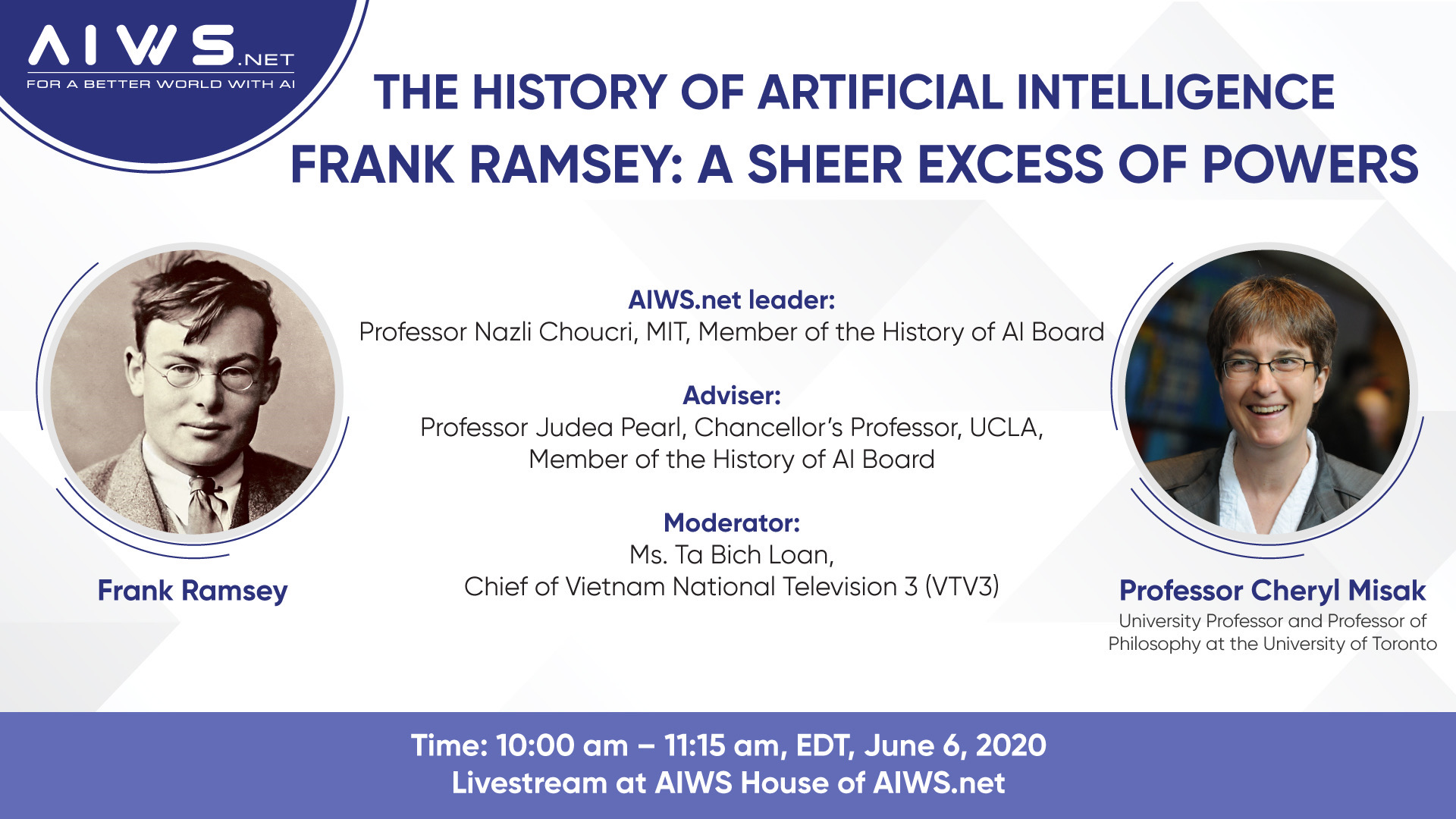
by Admin | Jun 4, 2020 | Chronicles
The History of AI, a part of Michael Dukakis Institute for Leadership and Innovation, starts post content of the AI Chronicle on AI World Society Network (AIWS.net). This content is the AI Chronicle – Open to Feedback: we encourage to receive comments, feedbacks from today June 6, 2020 to June 27, 2020, then the History of AI Board will review, approve and the AI Chronicle – Official will be posted on July 1, 2020. The History of AI Board will review the AI Chronicle biannual. Our approach is open-ended: based on our findings, we will develop research on the History of AI’s criteria, and we are open to invite individuals and organizations to contribute, comment to the project by gathering documents, stories and participating in analysis.
The Artificial Intelligence Chronicle article can be downloaded
here

by Admin | Jun 7, 2020 | News
Download here

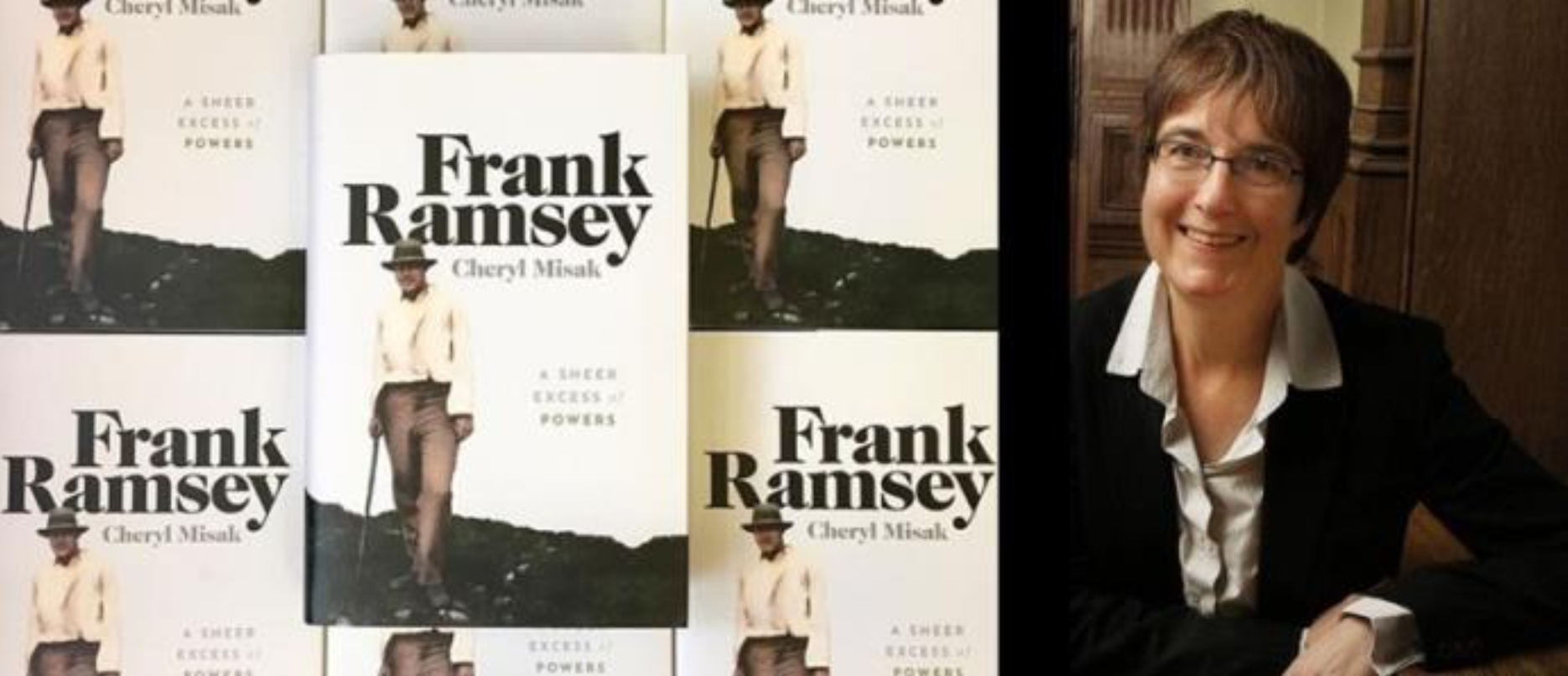
by Admin | Jun 6, 2020 | News
Reviewed by F. E. Guerra-Pujol
University of Central Florida
[email protected].
The original PDF, with works cited, can be found here.
Among other things, Frank Ramsey (b. 1903, d. 1930) was one of the first scholars, along with Bruno de Finetti (1974), to formalize subjective probability. In brief, the subjective view of probability can be expressed in terms of “degrees of belief.” By way of example, the probability of x outcome, where x a unique event such as Disney World reopening by a certain date or the U.S. Supreme Court voting to overrule Roe v. Wade, need not be an objective value but rather can consist of an individual’s personal or subjective judgment about whether x outcome is likely to occur. But how did Ramsey discover this revolutionary insight in the first place–the idea that probability can consist of a subjective or personal value? Cheryl Misak’s new biography of Frank Ramsey, which is subtitled “A Sheer Excess of Powers,” explores this terrain as well as Ramsey’s many other scholarly contributions.
Misak’s book is divided into three broad temporal sections: (1) “Boyhood,” which consists of three chapters devoted to the years 1903 to 1920, i.e. from the year of Ramsey’s birth up to his arrival at Cambridge University; (2) “The Cambridge Man,” which contains seven chapters that describe Ramsey’s undergraduate years at Trinity College as well as his six-month sojourn in Vienna in 1924; and lastly (3) “An Astonishing Half Decade,” which contains nine chapters and covers the last five years of Ramsey’s short but productive life. I will likewise divide my review of Misak’s biography into three parts, with each part of my review corresponding to one of the sections of Misak’s book. (Also, although Ramsey made significant contributions to a wide variety of fields, including economics, mathematics, and philosophy, I will focus the rest of my review on Ramsey’s contributions to probability theory.)
Ramsey’s boyhood
Although there is no direct evidence that Ramsey was exposed to the rigors of probability theory by his parents Arthur and Agnes Ramsey or during his formal education at Winchester College (a demanding English boarding school for boys), two details from Ramsey’s boyhood, as recounted in Part I of Misak’s beautiful book, stood out for me the most. One was the young Ramsey’s principled opposition to the brutal system of bullying and hazing at his boarding school. Misak summarizes this savage system on pp. 30-31 of her book. (Unless otherwise noted, all page references in this review refer to Misak’s 2020 biography of Ramsey.) Here is just one telling excerpt:
Each junior was the personal servant of an older student and had to “fag” or “sweat” for him. That meant cleaning the buttons and boots of his Officers’ Training Corps uniforms as well as his muddy cricket boots so they gleaned white again, as well as countless other tasks. The juniors [also] had to make the prefects’ tea, or afternoon meal, and wash up after ….
Ramsey detested these regular hazing rituals, and towards the end of his tenure at boarding school, he wrote in his diary that he had “[d]ecided to give up sweating juniors.” According to Misak (p. 49), Ramsey even made a bargain with the younger boy assigned to him that he would not be required to do any chores at all for him; in return, the boy was to pay it forward to his assigned junior. In other words, in this episode we see the young Ramsey was a man of principle.
The other aspect of Ramsey’s boyhood that caught my attention was his voracious reading habits, which Misak describes on pp. 48-49 of her book. Even at such an early age, Ramsey was a boy who loved the world of ideas, for in addition to his regular coursework at his boarding school, Ramsey devoured dozens of advanced works from a wide variety of fields. Among the many extracurricular books the young Ramsey is reported to have read are David Hume’s Treatise on Human Nature, Bertrand Russell’s Problems of Philosophy, and G.E. Moore’s Ethics. If one were to create a syllabus with the goal of imparting a well-rounded and liberal arts education, one would be hard-pressed to assemble a better collection of classic works.
Cambridge University
The next chapter in Ramsey’s intellectual life would take place at Cambridge University, where he would, among other things, study John Maynard Keynes’s Treatise on Probability and challenge Keynes’s approach to probability theory. Part II of Cheryl Misak’s intellectual biography of Frank Ramsey is thus devoted to the young Ramsey’s undergraduate years at Cambridge. If there is a common or overarching theme during these formative years in Ramsey’s intellectual life (1920 to 1924), it is his willingness to challenge the most powerful and sacrosanct ideas of such great and legendary scholars and philosophers as G.E. Moore, Bertrand Russell, and Ludwig Wittgenstein. Here, I will limit myself to just one such momentous undergraduate episode: Ramsey’s early critique of Keynes’s theory of probability.
To appreciate Ramsey’s first foray into probability theory, I must first provide some relevant background. The great John Maynard Keynes had published his Treatise on Probability in 1921, and in a review of Keynes’s work, none other than Bertrand Russell had called Keynes’s Treatise “the most important work on probability that has appeared for a very long time,” adding that the “book as a whole is one which it is impossible to praise too highly.” (See Russell, 1948 [1922], p. 152.) Why was Keynes’s work so highly praised? Because Keynes had developed a new way of looking at probability, one which allowed for the possibility of probabilistic truth. For Keynes, probability consisted of an objective or logical relation between evidence and hypothesis, or in the words of Misak (2020, p. 113, emphasis added), a relation “between any set of premises and a conclusion in virtue of which, if we know the first, we will be warranted in in accepting the second with some particular degree of belief.”
Ramsey, however, immediately identified two blind spots in Keynes’s conception of probability. (See Misak, 2020, pp. 114-115. For the record, Ramsey published his review of Keynes’s Treatise on Probability in the January 1922 issue of Cambridge Magazine, while he was still an undergraduate!) One was Keynes’s admission that not all probabilities are numerical or measurable, especially when the truth values of our underlying premises are in dispute. In that case, when we have no idea whether our premises are true or not, Keynes’s approach does not allow us to measure the probabilities of our conclusions. For Ramsey, by contrast, all probabilities should be measurable. But the other (more deeper) problem with Keynes’s theory was the “objective” nature of his view of probability–the idea that all statements or propositions stand in logical relation to each other. Ramsey denied the existence of these logical relations altogether. Far from being an “objective relation,” the strength or weakness of the relationship between two propositions also depended on psychological factors: on one’s personal experiences and subjective beliefs. In a word, probability was based on experience, not logic. For students of the common law (myself included), Ramsey’s approach to probability may sound familiar, or in the immortal words of the great Oliver Wendell Holmes (1991, p. 1): “The life of the law has not been logic: it has been experience.”
Yet, as the saying goes, it takes a theory to beat a theory, and at this stage of his promising career the young Ramsey had yet to develop his own full-fledged theory of probability. Ramsey would finally get around to doing so in the last half decade of his short life, but before proceeding, let’s take a short detour to recount two important personal episodes in Ramsey’s life: his six-month sojourn in Vienna (see chapter 7 of Misak), and his secret love affair with Lettice Baker (pp. 205-208), who deserves a biography of her own.
In brief, upon the completion of his undergraduate studies Ramsey had decided to spend an extended period of time in Vienna in order to undergo psychoanalysis. (It was during this time that Ramsey received the news of his appointment to a lectureship at King’s College. See Misak, pp. 178-181.) According to Misak (p. 161), at that time “taking the cure in Vienna” was a common pastime for many young Cambridge academics. In addition, Frank Ramsey took full advantage of all that the former imperial capital had to offer, including deep discussions with members of the legendary “Vienna Circle” of anti-metaphysical philosophers, cultured nights at the world-famous Opera, and even some sordid sexual escapades with a Viennese prostitute.
More importantly, within a month of his return to England in the fall of 1924 to begin his teaching duties, Ramsey met Lettice Baker at a Moral Sciences Club meeting at Trinity College. (It was at this meeting that G. E. Moore read his now famous paper “A defence of common sense.” See Misak, p. 205.) Shortly thereafter, Ramsey asked her out to tea, and they quickly fell in love. Among other things, one of the things that struck me the most about the Ramsey-Baker love affair was how they had to keep their amorous relationship a secret (pp. 207-208) until they formally got married in September of 1925. Be that as it may, Ramsey’s greatest contributions to the world of ideas, including his theory of subjective probability, were right around the corner.
Ramsey’s swan song
The third and last part of Cheryl Misak’s beautiful biography of Frank Ramsey (“An Astonishing Half Decade”) covers the last five years of Ramsey’s life. During the last half decade of his short but productive life, Ramsey made major contributions to a wide variety of fields, including economics, mathematics, and philosophy, but I shall focus here on his contributions to probability theory, for it was during this time that Ramsey developed his own full-fledged theory of “subjective” or psychological probability.
Ramsey developed his new approach to chance in a paper titled “Truth and Probability,” which he presented for the first time at a meeting of the Moral Sciences Club in November of 1926. (See Misak, 2020, p. 263. Ramsey’s influential 1926 paper was eventually published posthumously in 1931.) In this remarkable paper, Ramsey sketched out an entirely new and revolutionary way of looking at probability. We can summarize Ramsey’s picture of probability in ten words: probabilities are beliefs and beliefs, in turn, are metaphorical bets. For example, in Ramsey’s own words (quoted in Misak, p. 268), “Whenever we go to the station we are betting that a train will really run, and if we had not a sufficient degree of belief in this [outcome] we should decline this bet and stay at home.”
On this subjective view of probability, we can measure the strength of a person’s personal beliefs in betting terms, or again in Ramsey’s own words (Misak, p. 271), a “probability of 1/3 is clearly related to the kind of belief [that] would lead to a bet of 2 to 1.” In addition, Ramsey showed how one’s bets–i.e. one’s subjective or personal probabilities–should obey the formal axioms of probability theory. (As as aside, Misak’s biography includes a separate summary by Nils-Eric Sahlin of the technical details of Ramsey’s subjective or betting approach to probability. See Misak, pp. 272-273. See also Hájek, 2019.) It is hard to understate the importance of Ramsey’s “betting paradigm” of probability. Before concluding my review, then, allow me to call a time out to explain why Ramsey’s subjective or psychological theory of probability is so “significant” (pun intended, for my frequentist friends).
First and foremost, Ramsey’s betting paradigm fills a huge gap left open by standard probability theory (i.e. frequency theory), for as Misak herself correctly notes (p. 266), frequentist methods can neither “provide an account of partial belief, nor an account of how an individual should make one-off decisions.” This blind spot is so enormous and so well-known by now that I won’t belabor it here. Instead, it suffices to say that Ramsey single-handedly delivered a serious blow to frequency theory when he developed his subjective theory of probability. Secondly, Ramsey’s betting paradigm fills another huge blind spot in probability theory. Before Ramsey, the conventional wisdom so to speak was that some probabilities (especially personal probabilities) were not measureable in any rigorous way. After Ramsey, by contrast, we are now fully able to express any person’s partial beliefs, even his subjective ones, using numerical values. How? By converting one’s beliefs into betting odds. (As an added bonus, Ramsey’s intellectual framework even enables us to determine whether our subjective beliefs are rational are or not, via now- standard Dutch book arguments. See, e.g., Vineberg, 2016.)
In addition, Ramsey’s betting paradigm also provides the intellectual foundations for modern prediction markets (see, e.g., Wolfers & Zitzewitz, 2004), one of the most promising and exciting “mechanism designs” or market innovations of our time (see Arrow, et al., 2008). Perhaps we should rename prediction markets “Ramsey markets” in honor of Frank Ramsey. In any case, I have blogged about prediction markets many times before, so I won’t belabor this third point here. And last, but not least, Ramsey’s subjective approach to probability can be used to improve collective decision making via a method often referred to as “range voting” (see Smith, 2000) or “utilitarian voting” (see Hillinger, 2005) or to improve legal adjudication as well via similar methods I have christened “Bayesian verdicts” (see Guerra-Pujol, 2015) and “Bayesian judging” (see Guerra-Pujol, 2019). Again, perhaps we should rename these alternative methods of voting “Ramsian voting” or “Ramsey voting” in honor of Frank Ramsey. Regardless of the label we choose for these innovations, I can’t overstate enough how important and exciting Ramsey’s subjective approach is. For now, however, I will conclude my review of Misak’s biography with the following personal observations.
Conclusion
Because of my own scholarly interests in Bayesian methods, my review of Misak’s biography of Ramsey has been devoted mostly to Ramsey’s contributions to probability theory. I now want to conclude my review with a confession and a conjecture. My confession is as follows: When I first read Misak’s beautiful biography, I was at first sorely disappointed in two aspects of Ramsey’s short life: his six-month sojourn in Vienna, and the open nature of his marriage. Let me explain.
With the benefit of 20/20 hindsight, i.e. knowing that Ramsey would have such a short time to live, I was personally upset by Ramsey’s decision to squander no less than six months (!) of his short life to undergo psychoanalysis in Vienna. (For the record, I agree with Sir Karl Popper that psychoanalysis is “simply non-testable” and thus unfalsifiable pseudo-science. See Popper, 2002, p. 37.) Furthermore, I was also literally disheartened by the open nature of Ramsey’s marriage to Lettice Baker because of my own normative or idealized view of romantic love (and my conflation of romantic love with marriage). Like a good Catholic, I believe marriage is a holy sacrament, or put in more secular terms, love should not be a matter of degree; true love requires sacrifice in order to signify what game theorists refer to as “credible commitment” (see, e.g., Schelling, 1980).
But now, having finished reading Misak’s biography, I want to make a conjecture and perhaps even (like a good Bayesian!) update my priors regarding these two aspects of Ramsey’s life. Although true love might be all or nothing, what if love in the real world is a matter of degree? (Or as an economist might put it, what is the “optimal” level of love?) Also, what if far from being a fruitless waste of time, what if it was Ramsey’s extended exposure to psychoanalysis during his six-month sojourn in Vienna that somehow inspired him to develop his subjective approach to probability? After all, beliefs and desires–the raw materials, so to speak, of psychoanalysis–all play a critical role in Ramsey’s subjective theory of probability. If so, his sojourn in Vienna was not a waste of time; it was a necessary precondition of his contributions to the world of probability theory!
Thank you, Cheryl Misak, for sharing your Frank Ramsey with us.

by Admin | Jun 4, 2020 | Chronicles, News
The Social Contract 2020, A New Social Contract in the Age of AI, sets the foundation for a new
historical chapter: the emergence of AI societies. Governor Michael Dukakis stressed the importance
of studying history to prevent past mistakes from repeating in the present and the future. I value his
insight and would like to add that looking back at history is a way to shape and invent the future. We
should not content ourselves with merely predicting the future; with AI as our tools, we can strive to
innovate and organize it.
With that idea in mind, AIWS.net announced May 5, 2020, a new project—The History of AI—as a
companion to the Social Contract 2020, A New Social Contract in the Age of AI. While many
individuals and organizations study the history of AI already, AIWS will study the field from a
different angle and with a different approach. Our approach will be cross-sectional with the
following structure:
1. Principles, concepts, motivating ideas, methodology, model, and solutions in AI.
2. AI inventions in science and technology
3. AI applications, initiatives in politics, government, economics, and society.
Today June 6, 2020, The History of AI, a part of Michael Dukakis Institute for Leadership and
Innovation, starts post content of the AI Chronicle on AI World Society Network (AIWS.net). This
content is the AI Chronicle – Open to Feedback: we encourage to receive comments, feedbacks from
today June 6, 2020 to June 27, 2020, then the History of AI Board will review, approve and the AI
Chronicle – Official will be posted on July 1, 2020. The History of AI Board will review the AI
Chronicle biannual. Our approach is open-ended: based on our findings, we will develop research on
the History of AI’s criteria, and we are open to invite individuals and organizations to contribute,
comment to the project by gathering documents, stories and participating in analysis.
As a part of the History of AI, the AIWS House organizes talks, seminars about pioneering ideas,
concepts, methodologies, products, historical figures, events, achievements in AI, and presents them
in the AIWS House Online, and physics.
Today, as an event of AIWS House, the History of AI, Cheryl Misak, a University Professor and
Professor of Philosophy at the University of Toronto will talk “Frank Ramsey: A Sheer Excess of
Powers”. The History of AI at AIWS.net sees Frank Ramsey as an AI figure in history, who has
indirect influence on AI, especially in causal inference.
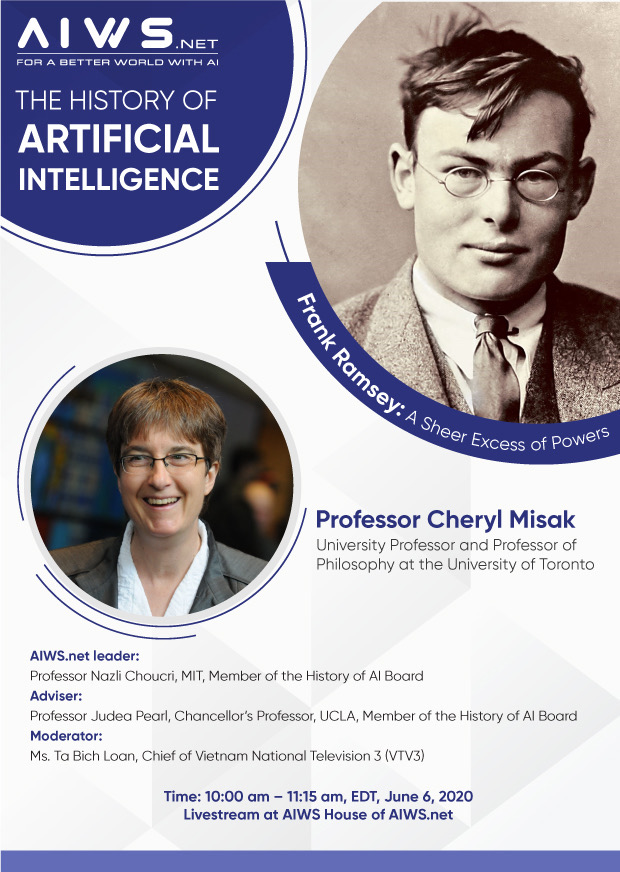

by Admin | May 26, 2020 | Chronicles, News
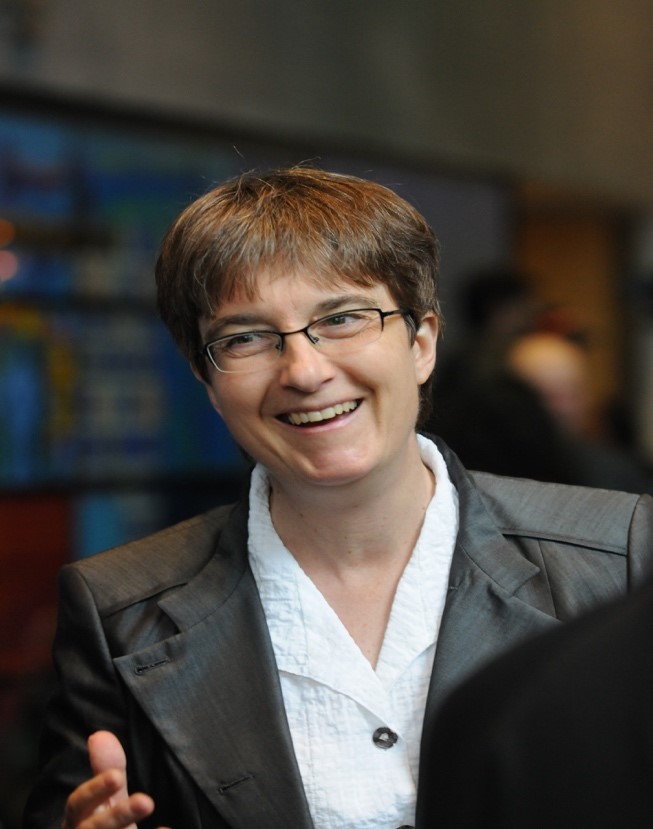
“Frank Ramsey—a philosopher, economist, and mathematician—was one of the greatest minds of the last century. Have we caught up with him yet?” By Anthony Gottlieb
Professor Judea Pearl, Mentor of AIWS.net, said: “Ramsey was definitely one of the clearest forerunners of subjective probabilities and the revival of Bayes statistics in the 20th century, which influenced the 1970-90 debate on how to represent uncertainty in AI systems.”
The History of AI at AIWS.net sees Frank Ramsey as an AI figure in history, who has indirect influence on AI, especially in causal inference.
In late April, 2020, the book “Frank Ramsey: A Sheer Excess of Powers” by Professor Cheryl Misak was published. She will talk about this new book at the History of AI, AIWS.net:
“Stories of Frank Ramsey, A Sheer Excess of Powers”
Time: 10;00 am – 11:00 am, EDT, June 6, 2020
Livestream here
This talk is an event of AIWS House, the History of AI.
AIWS House will host at least one talk a month to discuss historical figures, events, and achievements in AI through online or offline. This is a part of the History of AI at AIWS.net. Moderators will be thought leaders and media leaders. The content of talk belongs to and is recognized as the content of the History of AI at AIWS.net.
Cheryl Misak is University Professor and Professor of Philosophy at the University of Toronto. She works on American pragmatism, the history of analytic philosophy, ethics and political philosophy, and the philosophy of medicine.
Her books include Frank Ramsey: A Sheer Excess of Powers, Cambridge Pragmatism, The American Pragmatists, Truth and the End of Inquiry, and Truth, Politics, Morality.
She has had visiting fellowships or positions at the Goethe University in Frankfurt, the Free University in Berlin, Trinity College Cambridge, St. John’s College Cambridge, and New York University.
In 2013 she completed a long run in academic administration at the University of Toronto, culminating as Vice-President and Provost.
Professor Judea Pearl, UCLA, Member of the History of AI Board, Professor Nazli Choucri, MIT, Member of the History of AI Board, Professor David Silbersweig, Harvard, Member of the History of AI Board, Mr. Nguyen Anh Tuan, Director of Michael Dukakis Institute, Member of the History of AI Board, Professor Mikhail Kupriyanov, Vice President of ETU”LETI”, Russia, Professor Kirill Krinkin, Director of Popov Institute, ETU”LETI”, Mr. Barry Nolan, six times Emmy Award, Professor Tran Van Nhung, Former Vice Minister of the Ministry of Education, Vietnam Institute for Advanced Study in Mathematics, Ms. Ta Bich Loan, Chief of VTV3, will discuss with Professor Cheryl Misak about “ Frank Ramsey, A Sheer Excess of Powers”.
Agenda:
10:00 am: Professor Nazli Choucri introduces the History of AI at AIWS.net
Ms. Ta Bich Loan introduces Professor Cheryl Misak
10:08 am: Professor Cheryl Misak talks about Frank Ramsey
10:30 am: Q&A, Moderated by Ms. Ta Bich Loan
10:50 am: Professor Kirill Krinkin introduces the AIWS Leadership Master Program
11:00 am: Conclusion.
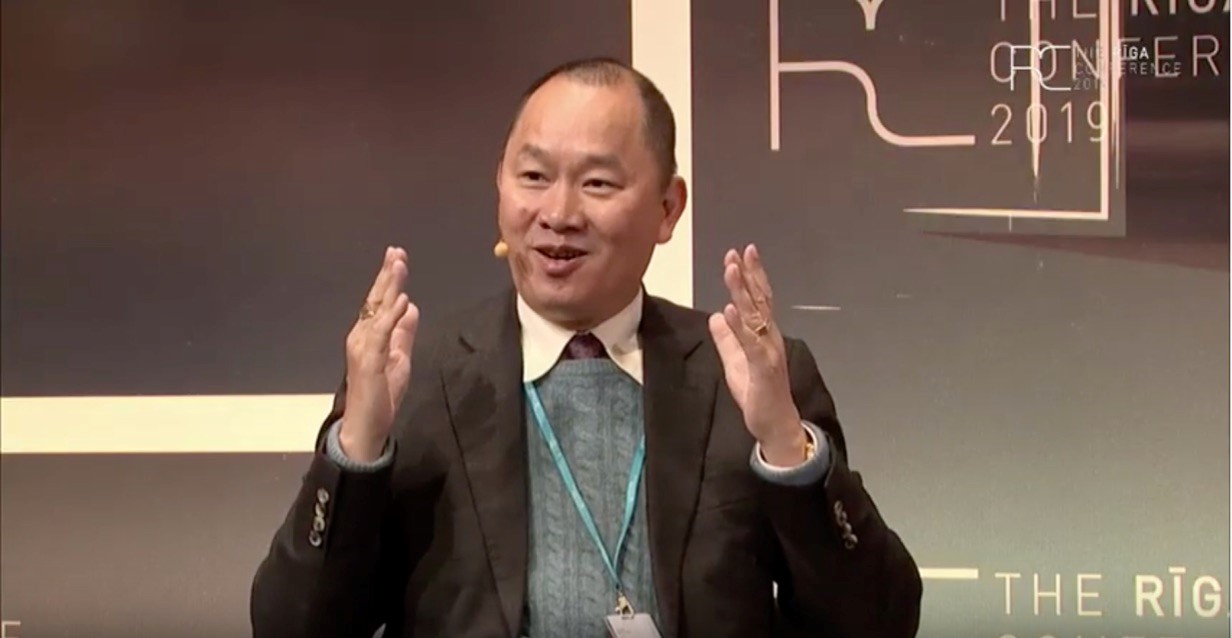
by Admin | May 5, 2020 | Chronicles
Nguyen Anh Tuan

The Social Contract 2020 sets the foundation for a new historical chapter: the emergence of AI societies. Governor Michael Dukakis stressed the importance of studying history to prevent past mistakes from repeating in the present and the future. I value his insight and would like to add that looking back at history is a way to shape and invent the future. We should not content ourselves with merely predicting the future; with AI as our tools, we can strive to innovate and organize it.
With that idea in mind, AIWS.net shall announce today May 5, 2020, a new project—The History of AI—as a companion to the Social Contract 2020. While many individuals and organizations study the history of AI already, AIWS will study the field from a different angle and with a different approach. Our approach will be cross-sectional with the following structure:
- Ideology, motivating ideas, methodology, model, and solutions in AI.
- AI inventions in science and technology
- AI applications in politics, government, economics, and society
The project aims to identify historical events, figures, and accomplishments, as well as lessons, documents, evidence, witness, and anecdotes, with the aim to study AI to shape the future of AI. The History of AI project will accompany the Social Contract. An AI Chronicle e-book version is available on AIWS’s website. There will also be AIWS House in Boston and on university campuses around the world.
The History of AI Board include Governor Michael Dukakis, Professor Judea Pearl (UCLA), Professor Alex Pentland (MIT), Nguyen Anh Tuan (Michael Dukakis Institute), Professor Nazli Choucri (MIT), Professor Thomas Patterson (Harvard University), Professor David Silbersweig (Harvard University), and Historian Chien Minh Le (President of Dalat University). The AI History Board will assess and identify historical events, figures, and achievements to feature in the AI.
Chronicle e-book, which will be updated monthly and reviewed annually. Our approach will be open-ended: based on our findings, we will develop research on the above criteria, and we invite individuals and organizations to contribute to the project by gathering documents, stories and participating in analysis.
The History of AI belongs to all citizens, and anyone who contributes their mind and efforts can shape it.
Together, we shall envision the Social Contract 2020, put it into practice, and invent the History of AI.










